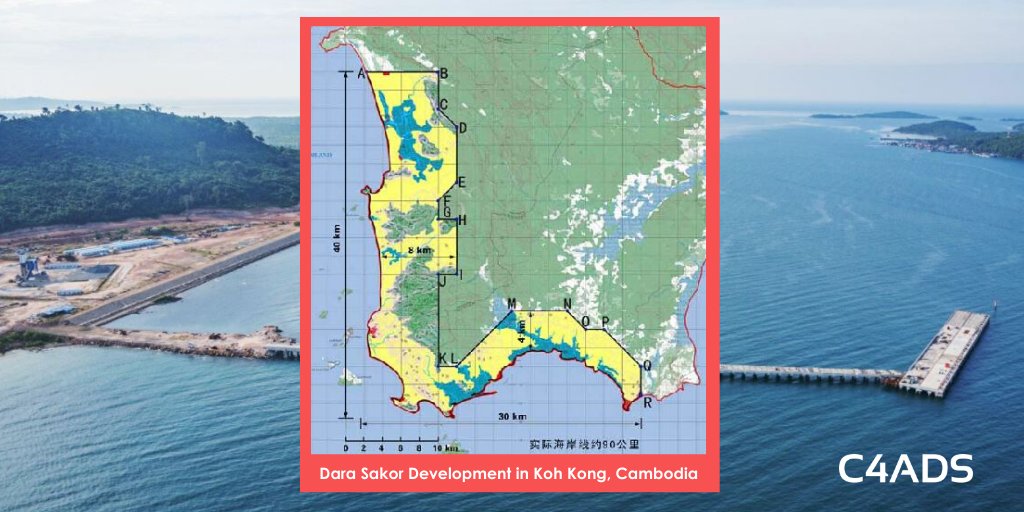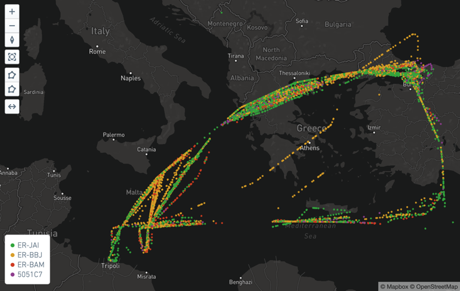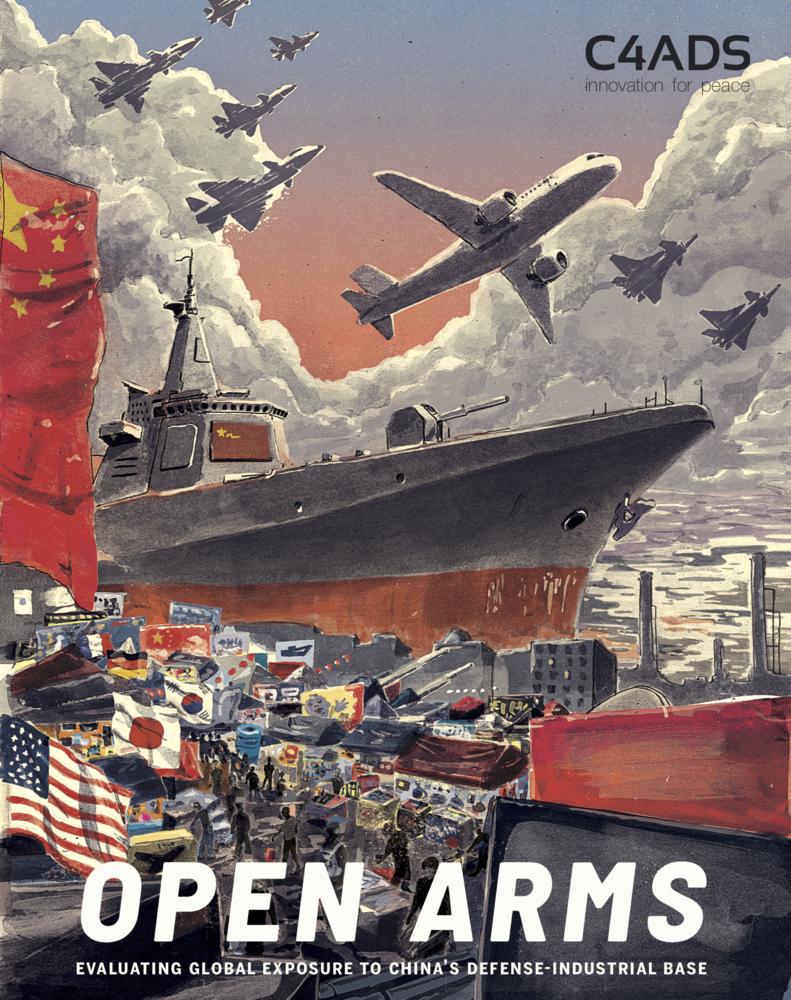
BREAKING: Global brands, governments, and financial institutions are supporting #ForcedLabor and abuse in #Xinjiang through their purchases and investments c4ads.org/long-shadows 

In a new report, we reveal how the Xinjiang Production and Construction Corps (XPCC) – a sanctioned Chinese government conglomerate that perpetrates mass detention and forced labor of #Uyghur people in #China – is still very much a part of global trade and finance. 
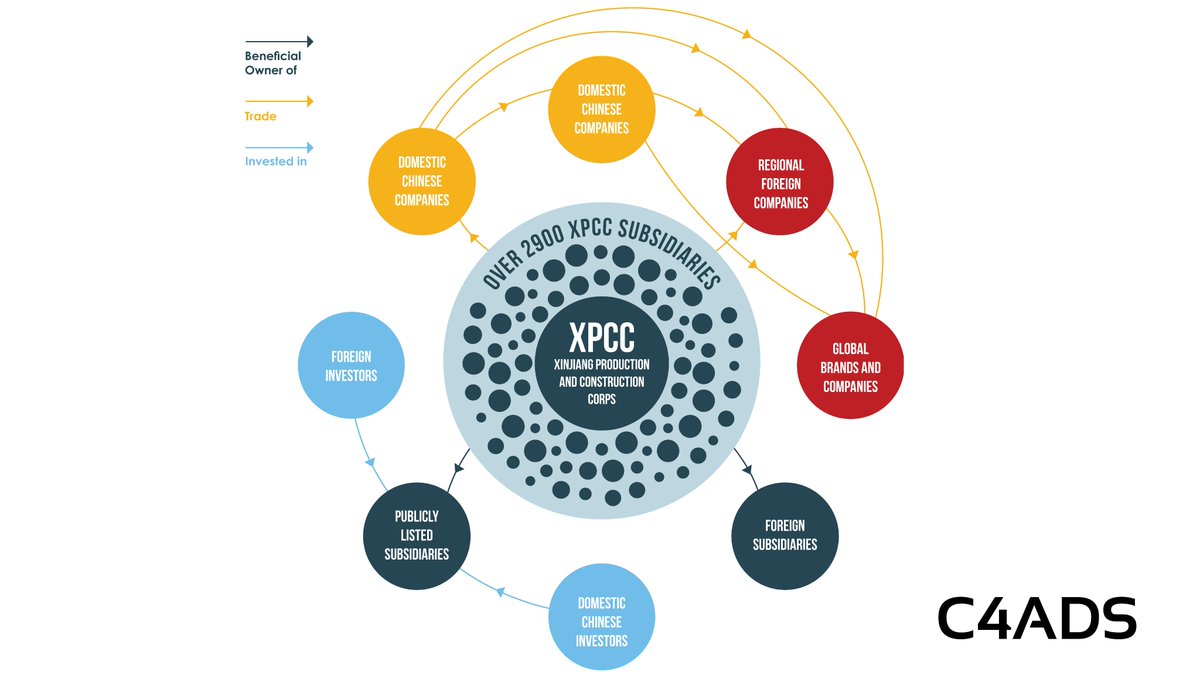
How did we uncover this? We identified and mapped almost 3,000 majority-owned XPCC subsidiaries. By analyzing trade and financial data, we discovered that the XPCC has continued to engage in economic activity through trade, foreign subsidiaries, and financial markets. 

Our analysis showed that #ForcedLabor goods from #Xinjiang move through masked supply chains to global consumers, primarily via:
1. XPCC trade partners (mostly in Central Asia and Russia)
2. Domestic trade in China
1. XPCC trade partners (mostly in Central Asia and Russia)
2. Domestic trade in China
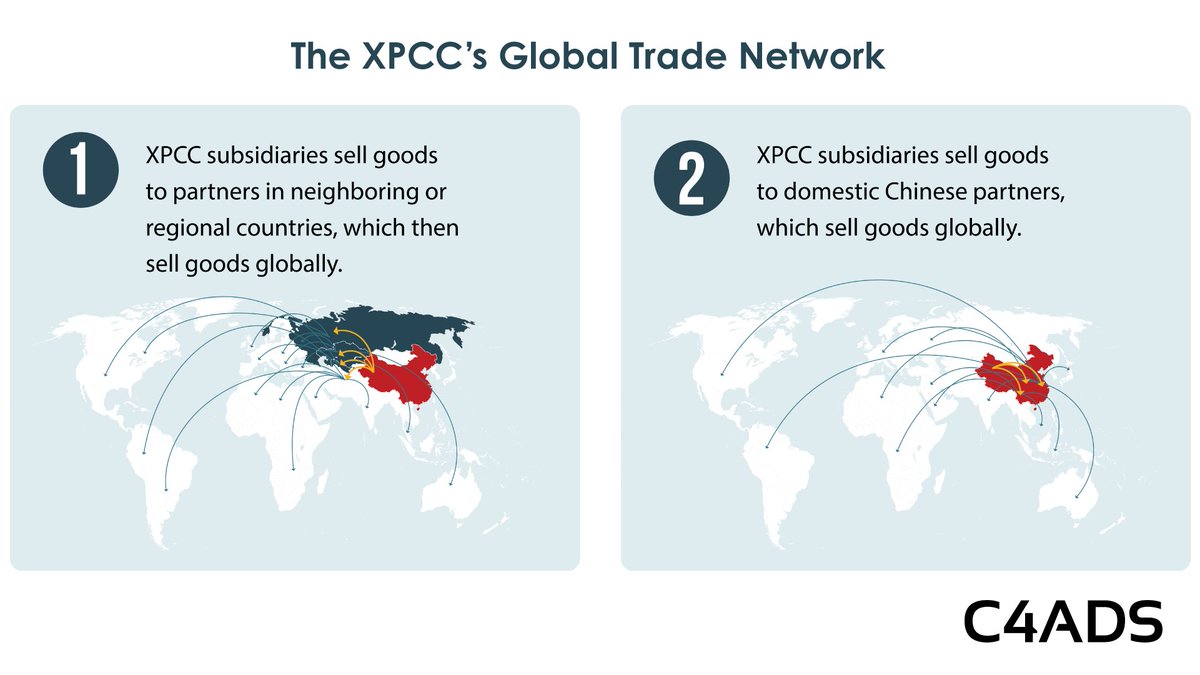
We found this pattern to be especially true for #Xinjiang cotton and tomatoes. These products are banned from entering the US due to evidence of #ForcedLabor, but are still likely entering the US through intermediary parties.
For example, Xiamen ITG is a Fortune 500 Chinese company and a known seller of XPCC cotton with strong ties to the XPCC. Despite these links, Xiamen is a @BCICotton member and supplies cotton and fabric to companies such as @Walmart and other major brands (see below). 
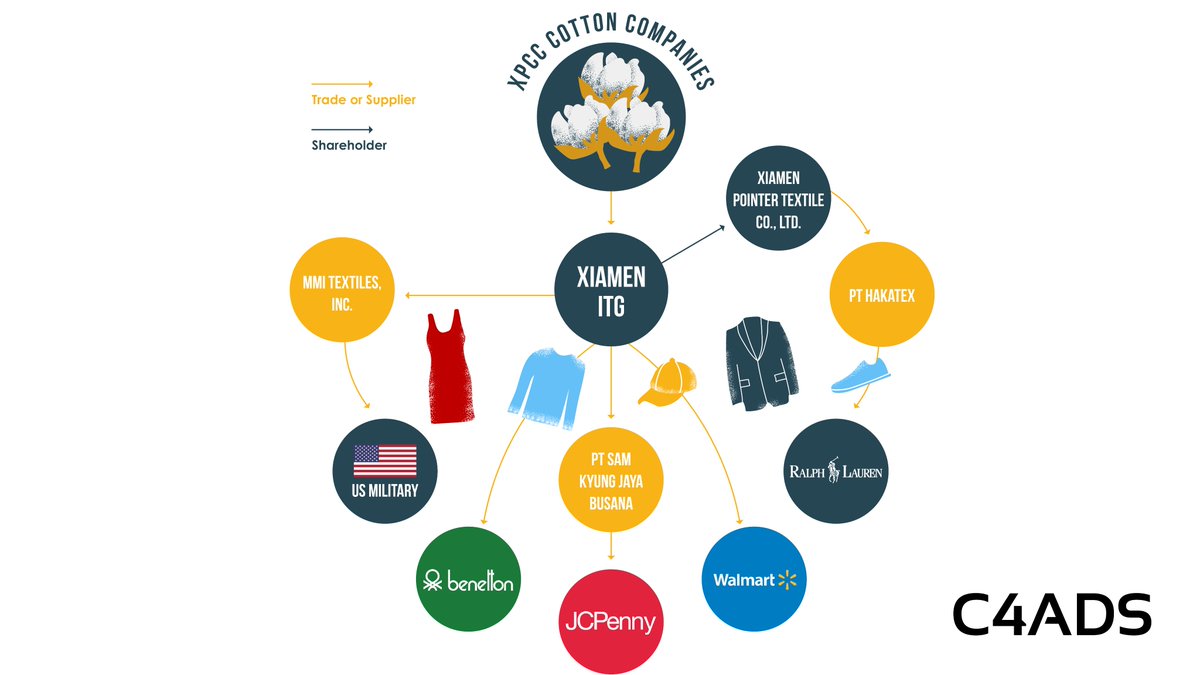
But trade isn’t the only way the XPCC profits from access to global markets – the XPCC also has foreign and publicly-listed subsidiaries which give it access to international capital and influence. 

For example, @ADB_HQ funds projects led by XPCC subsidiary Xinjiang Beixin Road & Bridge. In fact, many of the world’s major financial institutions (@Citibank, @MorganStanley, @MerrillLynch, & others) invest in the 13 XPCC companies listed on Chinese stock exchanges.
This is evidence that the global regime against human rights abuse is falling short, and sanctions and global outrage are insufficient at preventing #ForcedLabor and internment of #Uyghur people in #China. More needs to be done.
In our report, we provide recommendations for stakeholders to better act against forced labor & abuse in Xinjiang, ranging from improving entity visibility to widening the stakeholder circle.
c4ads.org/long-shadows
c4ads.org/long-shadows
And, to support researchers, regulators, and private actors, we’ve published the full list of XPCC subsidiaries that we analyze in the report – you can explore and download that data here: c4ads.org/long-shadows
For more on this story, read the reporting by Pulitzer Prize winner @meghara in @BuzzFeedNews 👇
buzzfeednews.com/article/meghar…
buzzfeednews.com/article/meghar…
• • •
Missing some Tweet in this thread? You can try to
force a refresh



